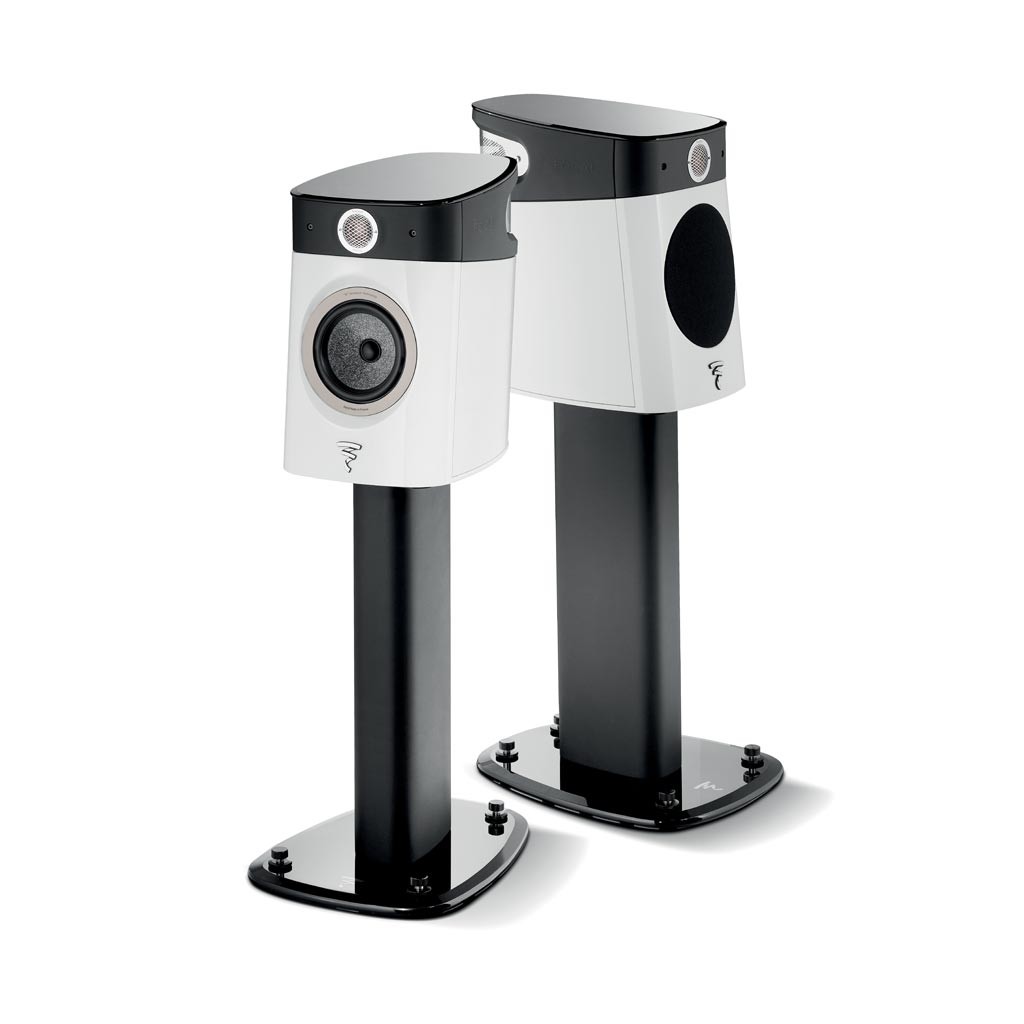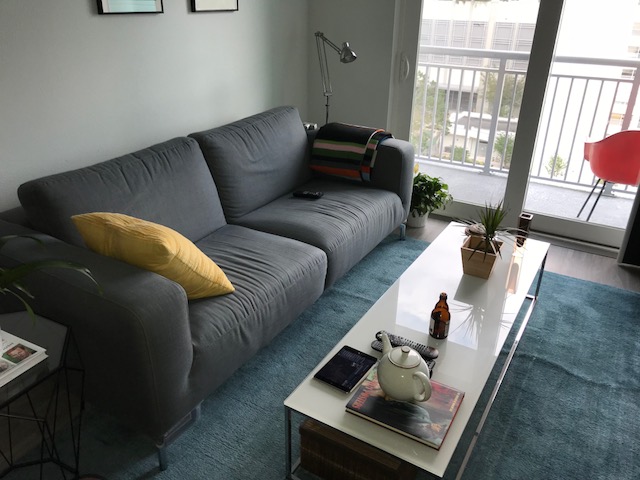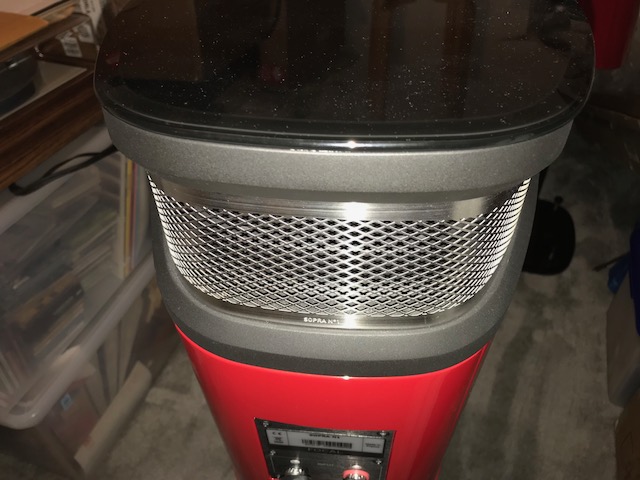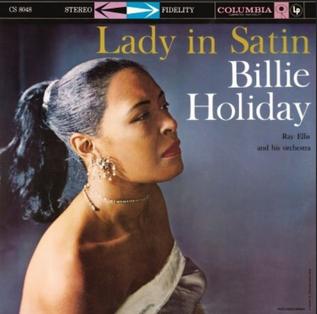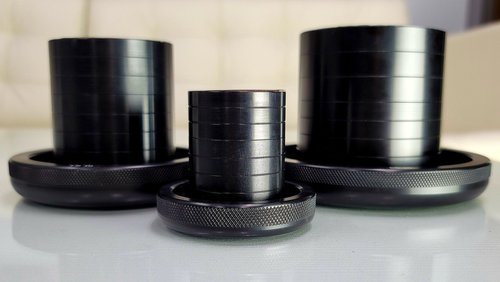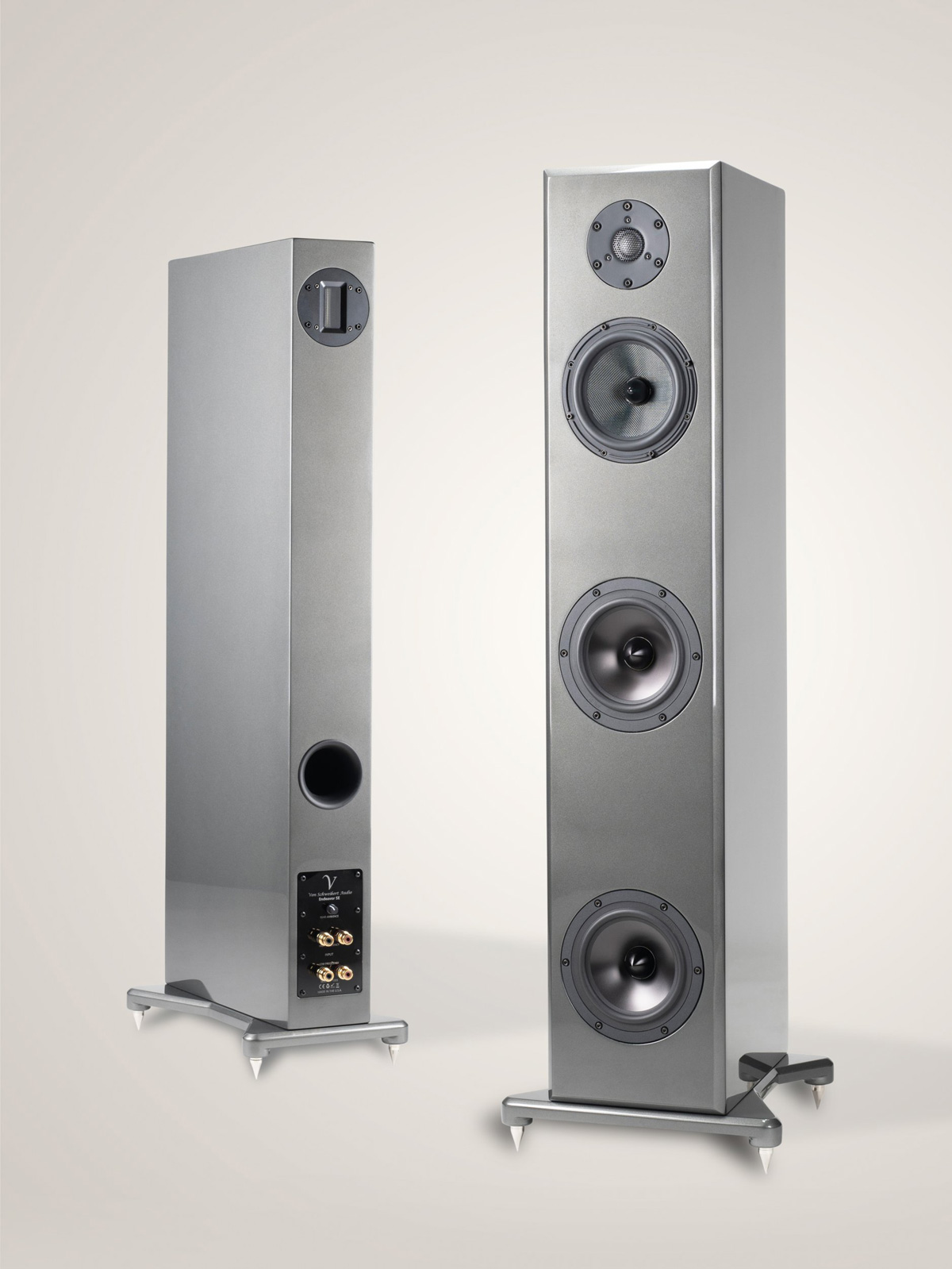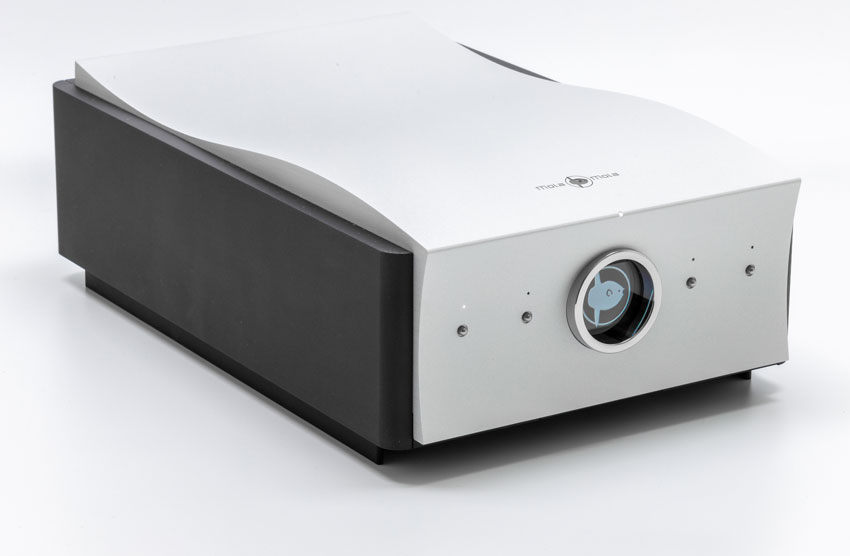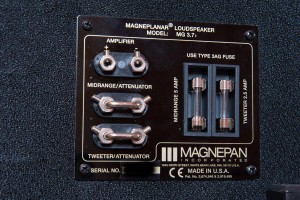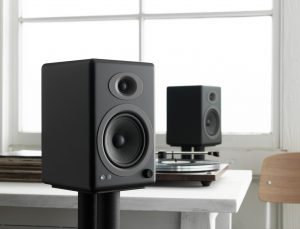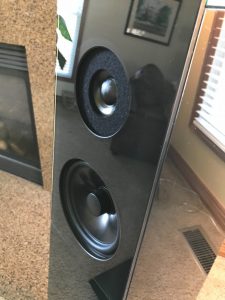Wooing the Parents with the Focal Sopra No. 1 Loudspeakers
I encountered Focal's exceedingly fine Focal Sopra No. 1 compact loudspeakers for the first time at the 2017 AXPONA audio show in the Audio Plus Services suite. Their beautiful sound and stunning good looks literally took my breath away. Paired with affordable Naim electronics (if memory serves), the 1 loudspeakers bowled me over with their speed, agility, verve, and utter naturalness. When I approached Audio Plus Service's then Regional Sales Manager Barnaby Fry, and later, APS's National Account Manager John Bevier about reviewing the 1 loudspeakers, they appeared interested, but had one major concern.
Several reviewers had already listened to, and written quite favorably about, the 1 in other journals. Two selling points ultimately convinced John to send a review pair my way. First, I explained that because I live in tight quarters, the only speakers I can accommodate are minis, compacts, and smaller floor-standers. The 1 fits these listening requirements/limitations to a "tee". Second, I was about to embark on a new review project, one that explored the outer reaches of getting great sound from small spaces (hence the name of this column, about which more, please see my review of Sutherland Engineering's KC VIBE phono preamp). Again, the compact 1 loudspeakers fits into my "less is more" narrative perfectly. John was sold! After an exchange of logistical details and shipping info, all that remained was to await delivery of the review pair.
From Focal Website
Big Boxes, Compact Speakers
The 1 arrived (in early July) in two large, heavily padded cardboard containers. Each box contained both the speakers and their superb matching stands, which is how the 1 loudspeakers were initially sold. John later informed me that future purchasers can secure the speakers sans stands if they already own a suitable pair, or purchase the custom-built supports for an added fee. The review pair with stands cost a not-insubstantial $8995 ($7995 without) at the time of this review.
Constructed of high-density MDF and heavily braced, the 1 tipped the scales at roughly 42 lbs. each. The speakers come in a variety of high gloss finishes, including red, orange, blue, and white, plus a wood-grained walnut veneer for traditionalists. Mine came in a sumptuous gloss red that wowed everyone who saw them, and that tastefully complemented my minimalist home decor. The matching powder-coated black stands also tip the scales at around 40lbs. The speakers bolt securely to the stands to create a rigid, secure, and quite attractive platform. Beautifully knurled, decoupled spikes allow for easy height adjustments and provide an exceptionally secure means of coupling stand to floor.
Focal provides support "pucks" for those purchasers with hardwood floors. Unfortunately, the review package I received did not contain the pucks. I ended up using an off-brand set of pucks that I purchased from Audio Advisor years ago. Together, speaker and stand strike quite the pose. Everyone who saw (and heard) the 1 loudspeakers, commented on their good looks. I would rate the 1 loudspeakers' partner acceptance factor (PAF) as very high.
Image by Maurice Jeffries
Audio Plus Services also sent along a set of IsoAcoustic Gaia isolators for evaluation. Unfortunately, the isolators I received did not fit under the speaker stands, or between the speakers and the stands (an isolation arrangement I have seen before but which utilize a different set of IsoAcoustic isolators). An email re: setup to APS, including a subsequent phone call, failed to resolve the matter, at which point I gave up. If I receive the correct set of Isoacoustic isolators in the future, I will report my findings to you.
Fit and finish details are certainly commensurate with the 1's high but not unreasonable cost. Their sensuously sculpted shape minimizes tweeter (here, a refined version of Focal's famous beryllium dome) diffraction artifacts, and aids in minimizing internal standing waves. The exceptionally thick front baffle and extremely well braced sidewalls impart a sense of solidity and tactile heft. The 1 sounded remarkably free of annoying box resonances.
The drivers are similarly high-tech. The new IHL (Infinite Horn Loading) tweeter employs a unique back wave absorption arrangement that reduces distortion to deliver clean, transparent highs. The "W" cone mid-woofer also utilizes new technologies, specifically the "TMD" suspension (Tuned Mass Damper) and "NIC" magnetic circuit (Neutral Inductance Circuit) to reduce distortions and deliver in Focal's words "refined midrange" and "articulated bass" performance. One final note: I am a big fan of the glass plate mounted to the top of the speaker, and the heavy glass base used on the speaker stands. In both instances, the smoked glass effect looks stunning yet did not color the sound in any way that I could detect during my many months of listening.
Image by Maurice Jeffries
Transparency and Musicality Re-defined
The 1 speak in a remarkably clear and supremely transparent voice. They exhume recorded details like a scanning electron microscope, but in a manner wholly consonant with the deeper musical message. High frequencies bloom with just the right balance of crystalline shimmer and airy fullness. The Focal beryllium tweeter surely ranks among the finest domed (here inverted) high frequency drivers in the world.
All types of music benefited sonically from the beryllium tweeter's transparency, speed, extension, and even-handedness. The inverted dome offered new and refreshing musical insights into all manner of vintage jazz recordings. Billie Holiday's late career masterpiece, Lady in Satin (Columbia), positively bristled with musical life and energy. Through the 1s, I could easily hear, and more importantly, feel the depths of pathos and regret behind each note Billie sang, and both hear and sense those moments when tape saturation belied the recording's mid-century origins.
Fortunately, the Focal inverted dome avoids the traditional bête noire of many otherwise fine metal dome and advanced composite tweeters: that unsettling tendency toward brightness and tonal thinness. Many modern metal domes rival the Focals in terms of sheer frequency extension, but few offer the latter's unique combination of sky-high extension, tonal purity, and timbral richness. For lack of better terminology, the Focal tweeters sound satisfying robust and full-throated, all the while maintaining that ineffable sense of airy openness, speed, and precision.
I wasn't the only listener in my home to feel this way. Cousin Joe and his lovely wife Diana visited me over the Thanksgiving Holiday, and got to hear for themselves what the Focal fuss was/is all about. After experiencing Lady Day (Lady in Satin again) for himself, Joe opined that the combination of the 1 (driven here by the Parasound JC-2/Bryston 4B3 pairing and sourced by the Lumin D1 server and my trusty Cambridge DAC) produced, for him, the most naturalistic reproduction of this work that he has heard.
The transition from tweeter to the well-established "W" composite sandwich cone mid-bass driver (consisting of "two sheets of woven glass tissue.... 'sandwiched' onto [a] structural foam core") was handled seamlessly. This enabled the 1 loudspeakers to speak with exceptional coherence and intelligibility. Densely scored orchestral works benefitted greatly from this precision. Andrew Penny's lovely 2001 reading of Malcom Arnold's celebrated Symphony No. 5, Opus 74 (Sir Malcom Arnold: Symphonies Nos. 5 and 6 (Naxos)) flowed with all the neo-romantic sweetness one could ask for, yet never in a heavy-handed, cloying manner. Individual instruments and sections remained highly individuated, yet still organically tethered to the rest of the orchestra. This seamlessness allowed images to launch into the room with superb precision and delineation. The Focals provide the kind of laser-like focus that fans of two-way monitors swoon over (including Yours Truly), plus the type of broad, deep staging that one typically associates with larger speakers.
Apart from the superb drivers, a good measure of the 1's success in the coherence, sound-staging, and imaging departments owes to the speaker's masterful suppression of cabinet noise. What one hears is the sound of the drivers themselves, their attendant crossovers, the partnering electronics, and of course, the listening room, but little else. And while I did detect a touch of frequency contouring (perhaps a 1-2dB boost in the treble, and a 1-2dB dip in the midrange), this gentle shaping never proved objectionable.
Macro and micro-dynamic panache also impressed, especially for a small speaker. Because they proved relatively easy to drive (Focal states the 1's sensitivity as 89dB with a minimum 4 Ohm impedance), the speakers reproduced dynamic crests and micro-dynamic twists with equal aplomb. My Bryston power amp delivers a whopping 500 watts into the speaker's four-ohm load, way too much power for any sane listener. Fortunately, I never came close to reaching those limits. I estimate that the Bryston never put out more than 50 or 60 watts of clean power when driving the Focals, even during the most demanding passages. What these wonders do require is an amp capable of delivering the necessary current to handle their 4 Ohm load. Fortunately, this shouldn't be an issue with most modern amps. The key here is quality not quantity.
Surprisingly, especially given their small size, the 1 loudspeakers reproduced the sweep and grandeur of the music to stunning effect. When I substitute small dynamic driver speakers for my beloved Maggie 1.7is, what I typically gain in overall dynamic swagger and punch, I tend to lose in terms of imaging scale and drama. Not so with the 1 loudspeakers, or at least not as much as one would expect. They are one of the few small dynamic speakers I have heard that offer staging and imaging insights that rival smaller planars in their ability to immerse the listener in the recorded ambient field. Often, small dynamic speakers sound, well, small. Not here. The Focals combine laser-like imaging focus and precision with the kind of dynamic swagger and staging competence that one associates with larger speakers.
Of course, the 1 loudspeakers' performance in this regard must be taken in context. After hearing Greg Weaver's superb home system (which includes the simply stunning GamuT Audio Zodiac reference speakers), the 1 does sound small, or at least smaller next to the 6-foot tall, 450-pound GamuTs (yes, you read all that right). They cannot approximate the height, depth and sheer scale of the soundstage that the Zodiacs conjure (especially when driven by reference-grade Audionet electronics and fed by the superb Kronos Sparta turntable), but then again, the 1 weighs literally one/tenth what the Zodiacs do, and cost 1/15th that behemoth's price.
Image by Maurice Jeffries
Yet, in their own demure way, the 1s do one thing the Zodiacs can't: they allow music lovers with smaller spaces to forget that they are listening to recordings and imagine instead that they are listening to the actual recorded performances. I could barely fit the Zodiacs through my front door, yet alone afford them the space and power they require to do what they do best. The little Focals are another story. They thrive in the kinds of rooms that the Zodiacs laugh off.
In acknowledging the 1 loudspeakers' ability to pull off this musical sleight-of-hand (in small-to-medium sized rooms), the speaker's well-disciplined dynamic drivers deserve special mention. I have already waxed enthusiastic about the superb inverted dome beryllium tweeter. The well-behaved mid-bass driver also deserves its fair share of the credit. Bass response and bass dynamics proved equal to the extension and sheer speed of the tweeter. In my small room, the speaker's low-end response dips comfortably into the mid-40s, totally in line with the Focal's stated figures. More importantly, the bass meshes superbly with the middle and high frequencies, sounding controlled and well-defined on all sorts of music.
Occasionally I could detect a bit of softness in the bass when the recording contained genuinely deep (i.e., sub-30 cycle) musical content and I pushed the speakers hard. I could also occasionally detect a bit of creeping brightness when I pushed the superb tweeters a bit too hard. But these moments were few and far between. In all other respects, the Focals sounded remarkably free of obvious distortions, at times approximating the performance of larger speakers.
More importantly, neither highly processed pop nor naturally recorded classical selections ever appeared to catch the bass units (or the speaker for that matter) short of breath, unless I pushed them too hard. Well recorded acoustic piano (a notoriously difficult instrument to reproduce accurately and, by extension, believably, both because of the complex harmonic overtones the instrument produces and because of its extremely wide dynamic envelope) sounded convincingly real through the 1s. Sadly, far too few of today's classical and jazz recordings get this delicate mix right. Far too many over-emphasize leading-edge transients and shortchange the instrument's natural harmonic complexities and decays.
One recording that I revisit frequently, and which does get each of these elements of sound reproduction right, is the late Shirley Horn's superb You Won't Forget Me (Verve). Horn was almost as well-respected an accompanist as she was a vocalist. Her skill at the keyboard is on full display on this 1990 digital gem. On the opening track, The Music That Makes Me Dance, Horn sounds a lovely G-sharp minor chord that sets the introspective tone for the rest of the song. The little Focals nail the way the chord pops into place/space rhythmically, and blooms both harmonically and dynamically to create the urgent sense of romantic anticipation Horn is (was) after. This is goose-bump inducing stuff!
What the Focals capture here, and capture about as well as any sub-$10K speaker in my experience, is what my buddy Jon Valin once described as "instrumental action". As Jon explained to me over lunch years ago, what he meant to convey by this phrase was the unique way in which instruments like the piano project out or "bloom" into the sound-field, not just dynamically and harmonically, but also in terms of the "image" size the instrument casts. Components that can convey this sense of instrumental "action" truthfully blend these disparate elements into a harmonious whole as they occur, which is to say, simultaneously. By the same token, what the Focals capture to a surprising degree (on the Horn CD) are the piano's speed of attack, attendant harmonic bloom, physical presenting power, and precise localization within the recorded sound field simultaneously. The net result is something that sounds more real than not, making it easier for the listener to forget that s/he is listening to a jumble of wires, transformers, drivers, cabinets, capacitors, and electrons.
Image by Maurice Jeffries
Parting Thoughts
I don't really have much to criticize here. For music lovers with quality partnering gear, but small listening rooms, I can't recommend the 1s highly enough. They will not (cannot) deliver sternum-crushing bass, but they offer enough low-end extension and power to satisfy on most music. OTOH, if you are someone who absolutely must experience the full weight and power of 20th century organ works, or the sternum-crushing punch of full-range pop and rock recordings, get a subwoofer for Heaven's sake, or a bigger speaker. The GamuT Zodiacs for instance.
For those with smaller spaces, the little Focals offer all the imaging and staging precision that small speaker devotees adore, as well as satisfying doses of dynamic swagger. More importantly, at least to my ears, everything played through the 1s sounds thoroughly and unapologetically beautiful. Not beautiful (i.e., colored) in the cloying, Old School tube amp manner, but beautiful in the sense that the speakers always, always produce sounds consonant to the music's deeper meaning, and always in a wholly naturalistic fashion.
They earn my very highest recommendation and are, in point of fact, my new compact references.
Bravo, Focal!
Postscript
I do need to mention several issues that surfaced during the review cycle which may warrant your attention. Just before I took delivery of the 1 loudspeakers, John Bevier expressed in a phone call his interest in having me review another product that APS distributes, Musical Fidelity's M6 Encore 225 Streaming Music System. John thought, and I agreed wholeheartedly, that PF's readers would appreciate learning how the Focals and MF's one-box source/amp combo performed together in my small listening space. John felt that the amp/player and speakers would perform synergistically. Our own David Robinson signed off the idea, I submitted the necessary paperwork, and informed the APS team that PF was onboard.
A couple of weeks after the speakers arrived, I contacted the APS team to inquire about the M6 Encore. Only then did I learn that an internal APS discussion had erupted over the propriety of sending out review samples to reviewers where no back-up dealer support exists. Apparently, APS does not have a Central Florida dealer, ergo, I wasn't getting the amp. Now, I certainly understand when a dealer/distributor insists on setting up an expensive review sample in a reviewer's home to ensure proper component placement and system integration, and to maximize overall performance parameters. OTOH, I'm not sure I see the wisdom of this policy when we are dealing with a product like the M6 Encore that costs $5995, a price considerably less than the cost of the Focals that I was cleared to review.
Look, APS's review policies are their own concern. I offer these insights only to highlight what I see as a bit of internal APS policy ambiguity, at least as communicated to me ("Yes you can review the product! Oops! No, you can't.") More troubling to me was the totality of little glitches that created a sense of overall frustration, however mild: the absent pucks, the incorrect IsoAcoustic Gaia isolators, and the poorly communicated policy decision surrounding the M6 Encore. I have no explanation for why these things occurred, nor do I care, quite frankly. You should care, however, especially if you plan on purchasing a product that APS distributes. In any event, purchasers will typically secure their speakers from ASP's extensive network of dealers. If you should encounter any problems, let your dealer handle it. That's what they're paid to do.
Post-postscript
The day after this review went "live", I got a phone call from none other than Audio Plus Service's National Account Manager, John Bevier. As I suspected, John called not to praise my praise-filled review of the Focal Sopra No. 1 (which he did, BTW), but to clear up the logistics concerns raised in the review postscript.
I took this as a good thing.
It did not take long to clear the road so to speak. As to the matter of the Musical Fidelity Encore 225, John indicated that the "policy" I reported on in the review, namely that APS does not typically send out review samples to reviewers where no back-up dealer support exists, proved not to be true. What I had described as a company mandate was in fact nothing more than the opinion of an APS employee. In the surrounding confusion, the APS team simply overlooked shipping me the Encore 225. To my delight, an email I received from John a day later contained the shipping details and tracking number for the Encore 225 review sample that he had his team send my way. Look for my review of the Encore sometime in the spring.
As to the IsoAcoustic Gaia isolators, John and I suspect that I encountered a product glitch, meaning that the isolators I received just didn't fit into the bases of the Focal No. 1 speaker stands. John promised to investigate and update me when he had an answer. Finally, John promised to ship out the floor protector pucks that should have come with the speakers, but didn't.
The take-away from this should be clear. Manufacturers and distributors who take customer service seriously, as the APS team and John Bevier clearly do, tend to stay around for the long-haul. Those that don't rightly fall by the side of the road. APS has been in business for 25 years, and is known as one of the largest and most influential players in the Canadian (where they go by the name Plurison) and U.S. high end markets. John's timely and gracious phone call assuaged any concerns I had over APS's commitment to provide prompt customer service and long-term customer satisfaction. As I explained to him during our conversation, I can forgive the odd shipping error or dropped phone call. We are all human, after all, and mistake-making is part of our collective DNA. OTOH, I do hold grudges over mistakes where the party responsible for the problem refuses to acknowledge his/her shortcoming/s and refuses to try to correct things. (By the same token, perhaps another post-speaker delivery phone call from Yours Truly earlier in the cycle might have cleared things up a bit sooner).
In any event, John and the APS team passed the critical customer service test with flying colors, a fact that should give their costumers and dealers an added sense of security and satisfaction. Thanks again, John, for your timely phone call and willingness to help. It meant everything to this reviewer.
Sopra No. 1 Loudspeakers
Retail: $8995 the pair with stands; $7995 without
U.S. Distributor
Audio Plus Services
156 Lawrence Paquette Ind. Dr.
Champlain, NY 12919
United States
http://www.audioplusservices.com
Focal




